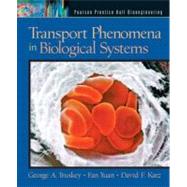
| Preface | p. xix |
| Introduction | p. 1 |
| Introduction to Physiological Fluid Mechanics | p. 51 |
| Conservation Relations and Momentum Balances | p. 53 |
| Conservation Relations for Fluid Transport, Dimensional Analysis, and Scaling | p. 118 |
| Approximate Methods for the Analysis of Complex Physiological Flow | p. 167 |
| Fluid Flow in the Circulation and Tissues | p. 211 |
| Fundamentals and Applications of Mass Transport in Biological Systems | p. 255 |
| Mass Transport in Biological Systems | p. 257 |
| Diffusion with Convection or Electrical Potentials | p. 338 |
| Transport in Porous Media | p. 387 |
| Transvascular Transport | p. 427 |
| The Effect of Mass Transport upon Biochemical Interactions | p. 449 |
| Mass Transport and Biochemical Interactions | p. 451 |
| Cell Surface Ligand-Receptor Kinetics and Molecular Transport within Cells | p. 509 |
| Cell Adhesion | p. 568 |
| Transport in Organs | p. 607 |
| Transport of Gases between Blood and Tissues | p. 609 |
| Transport in the Kidneys | p. 639 |
| Drug Transport in Solid Tumors | p. 689 |
| Transport in Organs and Organisms | p. 718 |
| Mathematical Background | p. 744 |
| Review of Calculus and Solution of Ordinary Differential Equations | p. 744 |
| Solution of Partial Differential Equations by the Method of Separation of Variables | p. 752 |
| Basics of Vectors and Tensors | p. 758 |
| Introduction to MATLAB | p. 766 |
| References | p. 772 |
| Index | p. 773 |
| Table of Contents provided by Rittenhouse. All Rights Reserved. |
The New copy of this book will include any supplemental materials advertised. Please check the title of the book to determine if it should include any access cards, study guides, lab manuals, CDs, etc.
The Used, Rental and eBook copies of this book are not guaranteed to include any supplemental materials. Typically, only the book itself is included. This is true even if the title states it includes any access cards, study guides, lab manuals, CDs, etc.